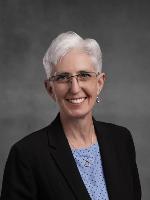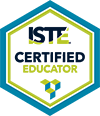UDL in Action in the K-12 Classroom
,
Colorado Convention Center, Bluebird Ballroom 3DE
Presenters


Session description
Purpose & objective
Participants will gain an understanding of the three key principles of Universal Design for Learning (UDL): Engagement, Representation and Action & Expression. In addition participants will review specific examples of how specific technology tools can help support those UDL principles and all UDL guidelines.
Reviewing these examples will allow participants to leave with specific ideas they can implement in their classrooms or with the teachers they coach.
Outline
The session will be delivered via an interactive Lumio (by SMART). Not only does this allow me as the presenter to get feedback as we go (so I can adjust the presentation to meet participants needs, it also allows participants to try Lumio from a student's perspective.
I will use a direct instruction model of ATLAS, from Weston's Kieschnick's The Educator's ATLAS (2022) book to plan the session for maximum engagement and learner growth.
5-8 Min A-Attention: Brief survey/quiz and video to introduce UDL
2 Min T-Transition: Using Instructional technology & UDL helps all students learn
10-15 Min L-Lesson: Interactive Lumio slides to review UDL guidelines, share UDL analogies. Participants will be able to interact through drawing, text, etc.
15-20 Min A-Activity: Participants will be given a specific guideline to focus on and then I will share some K-12 examples. Participants will share with each other and with the group, how UDL has been applied in that lesson and the role instructional technology tools play in designing and executing the lessons
5-8 Min S: Participants will decide on one UDL area and technology tool they want to implement when they return to their schools and share via Lumio and social media
Supporting research
Books:
- The Shift to Student-Led: Reimagining Classroom Workflows with UDL and Blended Learning by Catlin R Tucker and Katie Novak (2022)
- Innovate Inside the Box: Empowering Learners Through UDL and the Innovator's Mindset by George Couros with Katie Novak (2019)
- UDL Now!: A Teacher's Guide to Applying Universal Design for Learning 3rd ed. Edition by Katie Novak (2022)
- The Educator's ATLAS: Your Roadmap to Engagement by Weston Kieschnick (2022)
-
Session specifications
Laptop: Chromebook, Mac, PC
Tablet: Android, iOS, Windows
Designer
- Use technology to create, adapt and personalize learning experiences that foster independent learning and accommodate learner differences and needs.
Empowered Learner
- Students articulate and set personal learning goals, develop strategies leveraging technology to achieve them and reflect on the learning process itself to improve learning outcomes.
- Students choose the appropriate platforms and tools for meeting the desired objectives of their creation or communication.
| Related exhibitors: | SMART, Kami, Wakelet, Edpuzzle, Mote, GoGuardian + Pear Deck Learning, MagicSchool |
 Return
Return Participate and share: Interactive session
Participate and share: Interactive session  Trips and Tours
Trips and Tours